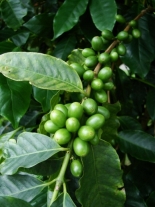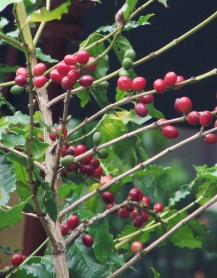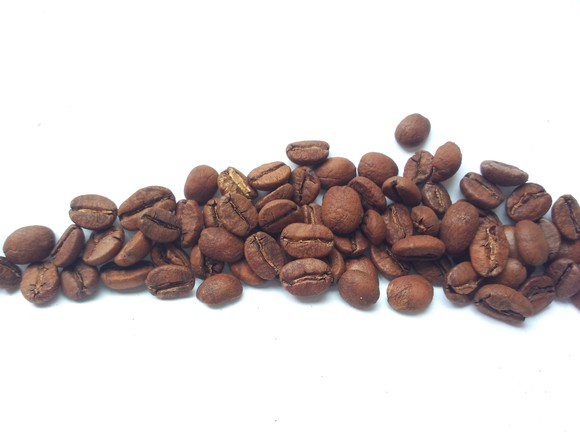The characteristics of coffee beans, the treatment methods of raw beans and the identification of flavor
The tradition of coffee
It is generally believed that the source of coffee came from around the sixth century, when shepherds on Mount Ethiopia were grazing on the prairie, they found that the sheep were upset because they had eaten the unknown fruit. I tried to develop this unknown fruit, which tasted sour and sweet, and refreshed me, so I discovered coffee.
The evolution of coffee
In the beginning, coffee was eaten by mixing chopped fruit with oil to make balls, and then it was gradually changed into boiling fruit and rice into juice to drink, while it was only formed in the 13th century when coffee beans were roasted and ground into powder as they are now. Coffee was added to the ingredients commonly used in Muslim lands in the 15th century, and was spread throughout the Muslim world by Muslims from all over the country. With the prosperity of Muslim countries in the 17th century, businessmen and travelers from Asia brought coffee to the continent and were regarded as treasures for banquets. At the end of the 17th century, coffee began to spread to all corners of the world, including the American continent.
The growing environment of coffee

Coffee is the fruit of a Rubiaceae plant, produced between the north and south lines, with an average annual temperature of 2225 ℃ (we also call it coffee bars). Coffee grows in places where there is no frost and little difference throughout the year, fertile soil, sandy soil, volcanic rock, soil and stone can be planted, mostly located in high-altitude plateaus or slopes, mostly pruned into white flowers with 5 or 6 petals of 2 to 3 meters. When it is ripe, it is like a peach to change from color to color.

The making of coffee

The fruit of a coffee bar is made on the outermost side of the peel, under the skin is the pulp, and underneath the pulp is a bowl of beans on bread with beans; while in a cup of fruit, I call it a flat bean and some people call it a mother bean, which is more common; while a person who has only one kernel in a fruit is called a pill bean or a pea peaberry.
Common coffee products at present
Elaraby plus species (ARABICA): this is the earliest variety discovered. Since it was first exhibited in Ethiopia, it is intolerant of low temperature and drought. It has large grains, good taste and mellow taste, and contains varying degrees of acidity. It accounts for about 85% of the world's output and is now the most important variety in the world. The main production areas are: central and South American countries, Brazil, Colombia, Ethiopia, Tanzania, Saudi Arabia, Indonesia and other places.
ROBUSDA: developed in fruit more than a thousand years ago, it is characterized by resistance to high grain, drought resistance, rough grain and small grain. It still has fragrance even after it is slightly bitter and cold. The main producers that account for about 15% of the world's output are: Java in Indonesia, fruit, Guangdong Ganda, Ivory Coast and other places.
Liberia plus species (LIBERICA): first found in Libby, beans are long, big, slightly pointed, like a small boat, not too inferior, too acidic, rarely used, but its high resistance to disease can be used to improve the supply species.
The main ingredients of coffee
The main ingredients of coffee include caffeine, mineral acid, monosodium acid, sugar, moisture, fat, protein and sugar, among which caffeine, monosodium acid and sugar are the main elements to form the flavor of coffee. Caffeine will also stimulate our skin, refreshing, speed up the heart, and dilute blood vessels so as to have a diuretic effect. In addition, newspapers and magazines also published a research report in the Special Journal of Infectious Diseases and Community Health, which shows that the more coffee middle-aged people drink, the lower the risk of heart disease and death, regardless of their age. the extent to which coffee is good for health is poor.
The process of coffee processing
For the coffee we drink today, it takes a lot of hands to get a cup of coffee from the beans.
Harvest: the actual harvest of coffee fruit depends on manual processing, and the coffee is picked off at a time.
Processing: there are several processing methods for coffee fruit.
Daily cooking method: the rice is exposed directly on the ground for about 12-15 days, and the pulp and bean curd are removed directly after drying. The nuts taken out are incomplete and the taste is poor. When it rains, it is easy to taste because of fermentation, but the cost is low.
Washing method: it only takes 20 to 24 hours to ferment the flesh and turn the flesh into green beans (soy beans), then remove the beans to become dried green beans, which tastes fresh and mellow, the time required is short, the beans are complete, the bad beans are few, and the cost is high.
Roasting: after roasting, the color of raw coffee beans changes from green to brown, and the aroma of coffee is aroused. Coffee beans from different production areas have different uses and are roasted to different degrees. The introduction of baking method can be tested
Matching: after the coffee beans are roasted, in addition to individual coffee, we will mix each single coffee into different flavors of mixed coffee according to its characteristics, so as to meet the needs of different tastes and different cooking methods.
Grinding: grind to a proper thickness according to different cooking methods.
Siphon coffee cooking method, the grinding scale is "coarse" grain, grinding is too coarse, the dissolution rate is slow, the taste may not be too bad, the grinding may be too bitter and too sour.
The brewing method of American coffee (drop type) requires only a little grinding of siphon coffee, which is too coarse, the water will flow quickly and the taste is not stale, the grinding is too rough, the soaking time is too long, and the taste is too bitter and too bad.
The brewing method of Italian-style coffee is the most ground, close to the powder, in order to match the extraction of coffee in a short period of time.
Stewing: at present, our commonly used cooking methods are siphon coffee bar, Malaysian coffee maker, mocha coffee maker, American coffee maker, mug, toaster, and so on.
Roasting degree of coffee beans
The roasting degree defined by Luoshan Coffee can be roughly divided into ⒅ wreckage, ⒅ gorilla carcass, ⑸ marmoset. Baked in a "hazy coat", especially the part of fine beans.
The variety of things we use? The roasting degree Agtron index of the quality coffee cup defined by CAA is # 65 million 55, or about High Roast~City Roast.
There are some boutique coffee beans in the community, including the organizations of SCAA or SCAE and even coffee beans. It is even more regrettable that Agtron#75 is used to enhance the fruity flavor of fine coffee, but the appearance of coffee beans is often full of folded and withered exterior, which is crisp in taste, but easy to be sharp in taste, only fragrant and weak in taste and finish.
Therefore, the fine beans of Coffee Coffee are used
Important Notice :
前街咖啡 FrontStreet Coffee has moved to new addredd:
FrontStreet Coffee Address: 315,Donghua East Road,GuangZhou
Tel:020 38364473
- Prev

Utensils for roasting coffee beans and the roasting process of coffee beans
Coffee roasted Coffee Roasting coffee is popular mainly because of the aroma formed after roasting and the taste when drinking. The coffee raw bean itself does not have any special taste, it is roasted to completely change and reorganize the substances inside the raw bean to form a new structure, thus bringing out the mellow flavor of the coffee. Baking tool roaster, divided into three types: direct fire type, semi-hot air straight
- Next

Costa Rica Fire Phoenix Manor Black Honey Violet has different flavors in different cooking methods.
[individual coffee] Costa Rica Fire Phoenix Manor Black Honey Violet Costa Rica Fire Phoenix Manor Black Honey Violet here first talk about the honey treatment of coffee beans. Black honey treatment (Dark Honey) is currently the most complex and difficult method of raw bean treatment, in which the most special is to completely retain 100% of the mucus that originally belongs to the pulp of coffee beans, and then go through natural fermentation.
Related
- Guji coffee producing area of Guji, Ethiopia: Humbela, Shakiso, Wulaga
- What is the most expensive variety of Qiloso in BOP multi-variety group?
- How to store the coffee beans bought home?
- Why are Yemeni coffee beans so rare now?
- Ethiopian Sidamo all Red Fruit Sun Sun Santa Vini Coffee beans
- SOE is mostly sour? What does it mean? Is it a single bean? what's the difference between it and Italian blending?
- Is Italian coffee beans suitable for making hand-brewed coffee?
- How to choose coffee beans when making cold coffee? What kind of coffee beans are suitable for making cold coffee?
- Just entered the pit to make coffee, what kind of coffee beans should be chosen?
- Can only Japan buy real Blue Mountain Coffee? What are authentic Jamaican Blue Mountain coffee beans?

